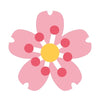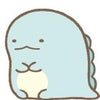History of Advent Calendars in Japan
Looking for a unique and exciting gift for your loved ones this Christmas? The advent calendar is one of the best gifts from Japan available to you. Learn all about how this European tradition became a global phenomenon and why it plays a vital role in Japanese gift-giving culture today.

Introduction to Advent Calendars
An Advent calendar is a special kind of calendar that counts the days leading up to Christmas (December 25). It typically features a large card with 24 doors or boxes, each one representing a day in the month of December. The traditional way to use an Advent calendar is to open one door or box each day until Christmas. Doing so will reveal a poem, image, story piece, or gift.

The calendar originated from the German Adventskalender, which was used by Christians in Germany in the 19th and 20th centuries before adoption by Christians in other countries. It was originally linked to the Advent season, which starts between November 27 and December 3 and ends on December 24. Hence, the traditional version features designs depicting the Christian “manger scene,” winter, and Saint Nicholas of Myra.

In the 21st century, Advent calendar themes have evolved to include all kinds of modern designs and hidden items. Common modern themes range from sports and pop culture to tech and lifestyle. Many countries outside of Europe have long since adopted and modified the use of Advent calendars. In Japan, people and organizations have fully embraced the practice, incorporating unique elements such as anime, snacks, and beauty products.

The Journey of Advent Calendars to Japan
To understand the purpose of Advent calendars, we need to look back at their European origins. The calendars first appeared in Germany in the form of the Adventskalender, a simple device used for counting down from the start of the Advent season to Christmas. The German Christians would mark off each day using a candle or chalk mark. Some of them went as far as hanging religious images or biblical texts, thereby increasing the spirituality of the practice. Printed Advent calendars would not appear in Germany until the early 20th century, particularly in 1903. They featured religious images and served as a method of daily devotion during the sacred Advent season. The calendars became quite common in German churches.
Gerhard Lang is globally recognized as the inventor of the modern Advent calendar. He was famous for working with children’s book illustrators to create calendars with fun and innovative graphic designs. Some of his most popular works, like the door calendar, are still in use today. Lang was also responsible for the first Advent calendars filled with chocolate. This new age version spread from Germany to other European countries. They were especially popular among Christian kids.

The growing popularity of Advent calendars across Europe led to their commercialization in the middle of the 20th century. Calendar manufacturers included small doors that people could open to reveal a picture, gift, or verse for the day. By the end of the century, these creators were incorporating toys and characters from pop culture. This led to a shift from religious themes to secular themes, broadening the market for Advent calendars.

With the growing influence of Western culture outside of Europe, Advent calendars spread to several countries in Asia, particularly in the 21st century. Among these Asian countries, Japan was perfectly poised to adopt the calendars, thanks to the existence of seasonal celebrations and holiday festivals. The country was also eager to merge Western practices with local cultures, and the Advent calendar was the perfect bridge between the two. The first versions of Japanese Advent calendars were no different from those made in Europe. They featured simple toys and small chocolate treats. However, local artisans began to include more Japanese elements relating to local tradition, kawaii themes, and domestic pop culture. The result is the wide variety of Advent calendars in Japan.
Popular Types of Advent Calendars in Japan
Japan’s take on advent calendars has captivated both local and international shoppers. The following are the three most popular types available on the market.
-
Anime and kawaii-themed Advent calendars: These types of calendars appeal to young people with an obsession for specific aspects of pop culture, especially anime, manga, and video games. Such persons are called otaku, and they make up most of the market for this category of calendars. The anime-themed cards often focus on a specific franchise, such as Naruto, My Hero Academia, Sailor Moon, or My Neighbor Totoro. They feature collectible items often designed in collaboration with the relevant animation studio. Kawaii-themed calendars follow a similar concept. They contain snacks, stationery, plushies, toys, and other items designed in collaboration with kawaii brands like Sanrio and Pokemon. These companies sell licenses to use imagery of their cute characters, such as Hello Kitty, Pikachu, Cinnamoroll, and My Melody.
-
Snack-filled Advent calendars: Countdown calendars filled with sweet and savory treats are arguably the most popular types in the market. They contain all kinds of candies, cookies, chips, puffs, nuts, and cakes. Japan is home to a number of global snack brands, like Calbee, Glico Pocky, Kubota Daifuku Mochi, and Morinaga Hi-Chew. Hence, you can expect to find the best kind of treats in these boxes.
-
Beauty and skincare Advent calendars: These calendars are packed with make-up, body lotion, face cream, fragrances, body oil, and the like. Although they tend to be more expensive than other types of Advent calendars, some of them offer fantastic value for money. The products they contain help to moisturize the skin, smoothen the face, and improve your overall appearance. However, it’s difficult to find calendars containing beauty products from the same brand. Most of them are combinations of dozens of different brands. Beauty and skincare Advent calendars help people to try out new, trendy products without paying large fees. Their usage is a growing trend in Japan.

Advent Calendars and Japanese Gift-Giving Culture
The gift-giving culture in Japan is a vital part of both corporate and casual relationships. Offering gifts to others is a common form of appreciation in the country. If you want to maintain any kind of relationship in Japan, etiquette demands that you regularly appreciate the other party with a gift. The following are some of the gift-giving traditions in Japan:
-
The gift should be concealed in a decorative container.
-
Seasonal celebrations such as Christmas require gift-giving, irrespective of your religion.
-
Oseibo (winter gifts) should feature a type of consumable gift.
-
Gifts should have some thoughtful meaning, no matter their price.
Advent calendars fit into those traditions perfectly. They are decorated with beautiful designs and images, offered during a seasonal celebration, often contain food, and hold special meaning through themes. These days, such calendars are no longer restricted to Christmas celebrations only. The use of countdown calendars has expanded to serve as gifts for other celebrations and special occasions. People use these calendars as gifts in anticipation of the New Year, a special trip, an anniversary, and the winter solstice celebration.
Unique Advent Calendars and Sugoi Mart’s 30 Day of Japan Calendar

Although the entire concept of holiday calendars began in Germany, the best ones are limited edition and unique advent calendars made in Japan. These calendars feature exclusive collaborations with anime franchises, Kawaii companies, and other pop culture brands that wield the right to offer official licenses to local artisans. They also contain rare collectibles that may be impossible to find in retail stores. The fact that they are only available for a limited time only adds to their appeal. Hence, every year, people look forward to the release of a new edition. Ideal examples are the 24-day (Golden Japan) calendar and 12-day (Radiant Japan) calendar offered by Bokksu Boutique. Both contain unique snacks and rare collectibles.

Then there’s the best limited edition advent calendar Japan has to offer: Sugoi Mart’s Japan-exclusive 30 Days of Japan Calendar. It contains 30 drawers! That means you get 30 days worth of goodies instead of the typical 24 days. You can expect to find stationery, plushies, toys, snacks, tea, and sweets made by top Japanese brands. Besides the extra days of fun, the 30 Days of Japan Calendar also comes with several other benefits, including the following:
-
All food items don’t expire until 2025.
-
It comes in a reusable custom design.
-
You can find out more about each item in the drawers by scanning a QR code.

Conclusion
When it comes to Advent calendars featuring anime themes or filled with snacks, look no further than Sugoi Mart. Every year, people all over the world rely on us for unique offerings and Japan-exclusive surprises. So far, we are yet to record a miss, and all of our calendars have been smash hits among lovers of Japanese culture and snacks. This gifting season, our 30 Days of Japan Calendar is the ultimate present for your friends and family. Help your loved ones countdown to Christmas start in style!
Author Bio









































































